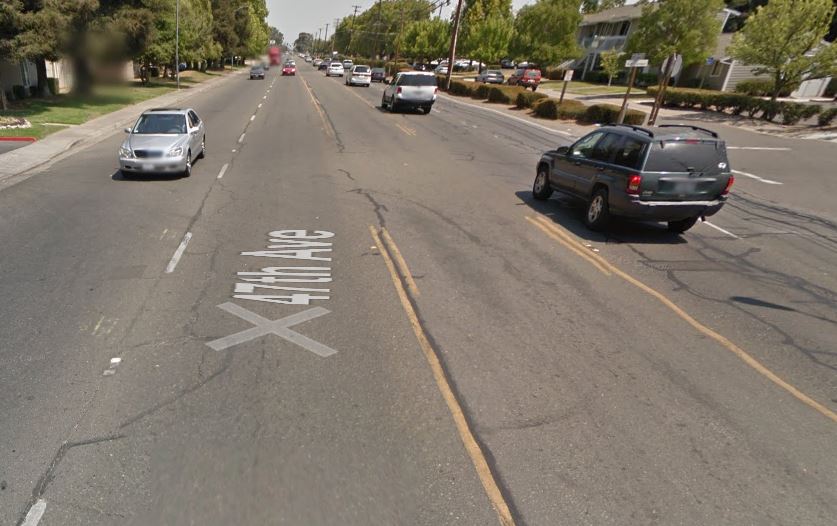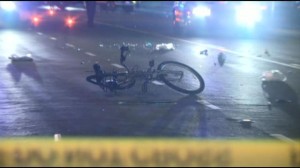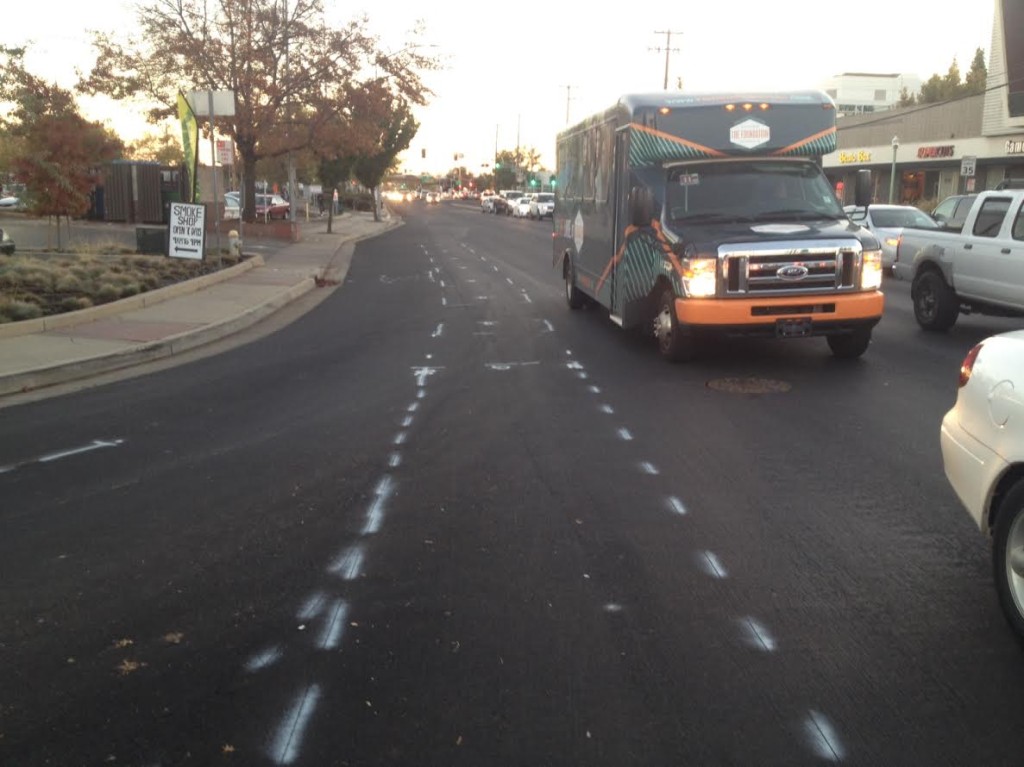Measure B on the Nov. 8 ballot can help fix Sacramento County’s most hazardous streets for people on bikes. SABA supports Measure B and urges a YES vote.

On Nov. 2, 2015, bicyclist Margaret Bengs was fatally injured on Fair Oaks Blvd. in Carmichael, where she was hit in the center turn lane by a driver turning from Kenneth Ave. There is no traffic signal or stop sign for Fair Oaks Blvd. traffic at Kenneth Ave. and no bike lanes on Fair Oaks Blvd. If Fair Oaks Blvd. had these improvements, Margaret Bengs would probably still be alive.
Major streets like Fair Oaks Blvd. are where most of the fatal bicycle collisions occur in Sacramento County. In the past 18 months, 13 other bicyclists have died in collisions on Auburn Blvd., East Natoma Street in Folsom, Edison Ave., El Camino Ave. (3 fatal collisions), Elkhorn Blvd. in Rio Linda (2 fatal collisions), Folsom Blvd., Howe Ave., Marconi Ave., Stockton Blvd. and 47th Ave.



All these streets share similar characteristics: 2 to 3 traffic lanes in each direction, speed limits of 35 MPH or faster, and distances up to a mile or more between intersections with signals or stop signs, all conditions that encourage drivers to speed. In collisions where the vehicle speed reaches 40 MPH, about nine out of 10 bicyclists die.
Improving major streets to safeguard people on bikes requires funding, yet there is less state and federal funding available even as competition among public agencies continues to increase.
Measure B would add a half-cent to the countywide sales tax for the next 30 years, generating $120M a year in revenues controlled by Sacramento County and the cities of Citrus Heights, Elk Grove, Folsom, Galt, Isleton, Rancho Cordova and Sacramento, with 70% of the revenues reserved for road improvements and 30% for specified public transit improvements. Measure B contains an expenditure plan that specifies projects and categories of improvements on which revenues can be spent within each jurisdiction.
Passage of Measure B would help create safer conditions for people on bikes in three ways:

First, local jurisdictions would be required to spend 75% of revenues on repaving and road rehabilitation projects for the first five years, the requirement known as “Fix it First.” Repaving a street requires repainting the pavement markings, and many of the improvements needed for making bicycling safer – adding bike lanes and marked crossings and reducing the number and width of traffic lanes (“road diets”) – mainly involve pavement markings. For example, on streets where bike lanes are planned, the City of Sacramento routinely installs them when the street is repaved. Repaving a significant number of streets over the next 5 years will create the opportunity to dramatically accelerate the installation of bike infrastructure.

Second, Measure B specifies that revenues will be spent on projects that implement local bicycle master plans. The bicycle master plans for the city and county of Sacramento and city of Rancho Cordova include protected bike lane projects that improve safety but are more expensive to install than conventional bike lanes. Measure B revenues can serve as matching funds that local jurisdictions need when seeking state and federal grants to pay for these kinds of projects.
Third, Measure B specifies 18 arterial streets in unincorporated Sacramento County where funding will be used for so-called “complete streets” improvements, including bike lanes, pedestrian crossings and public transit facilities that help slow traffic speeds, improve visibility and accommodate all modes of travel. Fair Oaks Blvd., Auburn Blvd., El Camino Ave., Elkhorn Blvd., Howe Ave., Marconi Ave. and 47th Ave., streets where 10 bicyclists have died in collisions over the past 18 months, are among the streets named in the Measure B expenditure plan.
When our roads are safer and more comfortable for bicycling, more people can confidently choose a bike for everyday travel, including the many people who continue to drive because they don’t feel safe riding under current road conditions. In fact, would-be bicyclists outnumber current bicyclists by 5 to one. Creating conditions sufficiently safe to attract those would-be bicyclists could have a significant, long-term benefit for regional traffic congestion and air quality.
But realizing these benefits will require more than just increased funding. Making the most of Measure B will also require the adoption and implementation of comprehensive best practices policies for street design, bicycling, public transit and roadway safety; the commitment of public agencies to engage and listen to residents; and the political will to commit resources and correct inequities that produced unequal transportation investments across neighborhoods (often at the expense of the least advantaged residents).
Not all of the local jurisdictions have robust plans and policies or sufficient political will to commit to them. If Sacramento County voters approve Measure B, SABA and allies that advocate for neighborhoods, equity, public transit and the environment will have to work hard to ensure that Measure B expenditures are cost-effective and directed where they’re needed most. Sacramento’s new Vision Zero program is an example of a policy that can help ensure that Measure B revenues produce genuine safety benefits for bicyclists, pedestrians and transit riders.
Everyone in our region benefits when more people can use a bike as safe, convenient everyday transportation. But without adequate funding, roadway conditions will continue to deteriorate, endangering those who currently ride while deterring those who will only ride once our roads are safer.
Our region can’t afford to miss this opportunity to make essential improvements to our roads. Vote YES on Measure B on Nov. 8.
LEARN MORE
Yes on Measure B website
Measure B fact sheet (Sacramento Transportation Authority)
Measure B expenditure plan (Sacramento Transportation Authority)

